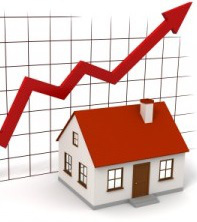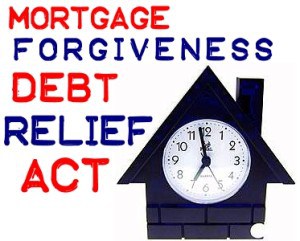Investors Demand Easing: Opens Door for Buyers
Blog, Buying, Market Updates, Real Estate Tips | Dunham Stewart The proportion of investors involved in the housing market has fallen in the last few months. As their numbers dwindle, it may allow other buyers to step in, according to housing experts.In recent years, many buyers—particularly first-time home buyers—may have lost out to investors’ all-cash offers on homes. Banks and sellers may have been lured by the idea of a quick deal that cash offers typically provide over offers from buyers who require financing. But with less competition from investors, some housing experts say this may allow an opportunity for other potential buyers to get into the market. Investors have gone from accounting for 23 percent of home purchases in February to about 20 percent in June—the lowest level since September 2012, according to data from Campbell/Inside Mortgage Finance survey. With mortgage rates rising in anticipation of the Federal Reserve scaling back the generous stimulus to the economy it introduced during the financial crisis of 2007-2009, investors are pulling back. Their numbers will likely decrease even more in the coming year. About 48 percent of investors recently surveyed say they plan to lessen their home purchases over the next year, according to a recent survey by ORC International. Only 20 percent of the investors surveyed say they plan to buy more homes in the next year, a drop from 39 percent 10 months earlier. The softening of investor demand has also coincided with a drop in sales of so-called distressed properties, whether foreclosures or short sales. These homes usually sell for less than others and had been the focus of investor interest. In July, distressed homes made up only 15 percent of sales, according to the National Association of Realtors. That matched June’s reading, which was the lowest since the group started monitoring distressed sales in October 2008.
The proportion of investors involved in the housing market has fallen in the last few months. As their numbers dwindle, it may allow other buyers to step in, according to housing experts.In recent years, many buyers—particularly first-time home buyers—may have lost out to investors’ all-cash offers on homes. Banks and sellers may have been lured by the idea of a quick deal that cash offers typically provide over offers from buyers who require financing. But with less competition from investors, some housing experts say this may allow an opportunity for other potential buyers to get into the market. Investors have gone from accounting for 23 percent of home purchases in February to about 20 percent in June—the lowest level since September 2012, according to data from Campbell/Inside Mortgage Finance survey. With mortgage rates rising in anticipation of the Federal Reserve scaling back the generous stimulus to the economy it introduced during the financial crisis of 2007-2009, investors are pulling back. Their numbers will likely decrease even more in the coming year. About 48 percent of investors recently surveyed say they plan to lessen their home purchases over the next year, according to a recent survey by ORC International. Only 20 percent of the investors surveyed say they plan to buy more homes in the next year, a drop from 39 percent 10 months earlier. The softening of investor demand has also coincided with a drop in sales of so-called distressed properties, whether foreclosures or short sales. These homes usually sell for less than others and had been the focus of investor interest. In July, distressed homes made up only 15 percent of sales, according to the National Association of Realtors. That matched June’s reading, which was the lowest since the group started monitoring distressed sales in October 2008.

 When it comes to the economy and the Federal Reserve, do you believe economic abstractions or job creators? This has been a hard-to-read recovery, leading the central bank to err on the side of doing more rather than less. The Federal Reserve has held its ground on maintaining its stimulus program. They have recently announced that it will continue purchasing $85 billion in bonds each month — at least for now. The Fed’s bond-purchasing program has helped move mortgage rates to their lowest levels on record in recent months. However, the Fed has signaled that the program would likely come to an end soon, causing a shift upward in mortgage rates. “We have seen recent up tick in mortgage rates — which almost certainly is due to market expectations of tapering in the near future and may have influenced the Fed in not changing its guidance,” Econoday analysts said. The economy added 200,000 new jobs last month, 20,000 of which were construction jobs due to an upswing in housing. The job growth could point to less need for the bond-purchasing program. Federal Reserve chairman Ben Bernanke has made recent comments that a slowdown in bond-buying could begin some time this year.
When it comes to the economy and the Federal Reserve, do you believe economic abstractions or job creators? This has been a hard-to-read recovery, leading the central bank to err on the side of doing more rather than less. The Federal Reserve has held its ground on maintaining its stimulus program. They have recently announced that it will continue purchasing $85 billion in bonds each month — at least for now. The Fed’s bond-purchasing program has helped move mortgage rates to their lowest levels on record in recent months. However, the Fed has signaled that the program would likely come to an end soon, causing a shift upward in mortgage rates. “We have seen recent up tick in mortgage rates — which almost certainly is due to market expectations of tapering in the near future and may have influenced the Fed in not changing its guidance,” Econoday analysts said. The economy added 200,000 new jobs last month, 20,000 of which were construction jobs due to an upswing in housing. The job growth could point to less need for the bond-purchasing program. Federal Reserve chairman Ben Bernanke has made recent comments that a slowdown in bond-buying could begin some time this year.
 South Bay housing prices continued to climb in June, according to new statistics released by the South Bay Association of Realtors. The average prices of a single-family home in the South Bay increased 7.1 percent while the average price for a condominium or townhome jumped more than 29 percent, compared to one year ago. In June, the average price of a single-family home in the South Bay rose to $706,797 compared to an average price of $660,084 in June 2012. The average price for a condo or townhome in the area currently sits at $577,405 compared to $446,784 one year ago. Even though the report indicates that home inventory is in short supply which is helping increase housing prices, the South Bay housing market appears to be more stable than it was at this time last year. Data for June was compiled by the SBAOR using the California Regional Multiple Listing Service, Inc. (CRMLS). Cities surveyed included Carson, El Segundo, Gardena, Harbor City, Hawthorne, Hermosa Beach, Lawndale, Lomita, Manhattan Beach, Redondo Beach, San Pedro, Torrance, and Wilmington.
South Bay housing prices continued to climb in June, according to new statistics released by the South Bay Association of Realtors. The average prices of a single-family home in the South Bay increased 7.1 percent while the average price for a condominium or townhome jumped more than 29 percent, compared to one year ago. In June, the average price of a single-family home in the South Bay rose to $706,797 compared to an average price of $660,084 in June 2012. The average price for a condo or townhome in the area currently sits at $577,405 compared to $446,784 one year ago. Even though the report indicates that home inventory is in short supply which is helping increase housing prices, the South Bay housing market appears to be more stable than it was at this time last year. Data for June was compiled by the SBAOR using the California Regional Multiple Listing Service, Inc. (CRMLS). Cities surveyed included Carson, El Segundo, Gardena, Harbor City, Hawthorne, Hermosa Beach, Lawndale, Lomita, Manhattan Beach, Redondo Beach, San Pedro, Torrance, and Wilmington.
 Young, first-time buyers are struggling to purchase a home. With low inventories of homes for sale, young first-timers are finding themselves competing against other bidders who are willing to pay cash. Meanwhile, many young buyers are having trouble qualifying for a loan, often due to high student loan debt. The number of first-time home buyers has been steadily falling in recent years. In May, first-time buyers accounted for 28 percent of existing-home purchases — a drop from 34 percent a year ago, according to NAR. Overall, young buyers have been left out of the housing recovery more than any other age group, according to a new USA Today analysis. The home ownership rate for 25 to 34 year olds has gone from 46.7 percent in 2006 to 29.7 percent in 2011 — a decline of 7 percentage points. The median age of first-time home buyers was 31 in 2012, according to National Association of REALTORS® data. As comparison, the 45-54 age group has seen home ownership rates fall 3.8 percent. First-time home buyers are viewed as critical to a healthy housing market, allowing older Americans to purchase their next home and helping to stimulate new-home construction.
Young, first-time buyers are struggling to purchase a home. With low inventories of homes for sale, young first-timers are finding themselves competing against other bidders who are willing to pay cash. Meanwhile, many young buyers are having trouble qualifying for a loan, often due to high student loan debt. The number of first-time home buyers has been steadily falling in recent years. In May, first-time buyers accounted for 28 percent of existing-home purchases — a drop from 34 percent a year ago, according to NAR. Overall, young buyers have been left out of the housing recovery more than any other age group, according to a new USA Today analysis. The home ownership rate for 25 to 34 year olds has gone from 46.7 percent in 2006 to 29.7 percent in 2011 — a decline of 7 percentage points. The median age of first-time home buyers was 31 in 2012, according to National Association of REALTORS® data. As comparison, the 45-54 age group has seen home ownership rates fall 3.8 percent. First-time home buyers are viewed as critical to a healthy housing market, allowing older Americans to purchase their next home and helping to stimulate new-home construction.
 Earlier this year, President Obama signed a one year extension to the law known as the Mortgage Debt Relief Act, which was intended to help homeowners faced with an underwater mortgage. These toxic loans resulted from the housing crisis of the last few years. These homeowners typically owe more on the mortgage than the house is worth on the market. Even though we are seeing a significant percentage of owners elevated from this situation with the escalating home prices this year. For many the fact remains if they sold the property, they would still owe money to the lender. Many owners are working with their lenders to adjust the mortgage to reflect the property’s current market value. Before the relief law was passed in 2007, the IRS treated the amount of the mortgage forgiven or written off by a lender as income for the owner. Under the current law, qualified homeowners can avoid that problem. The applies to only primary residences, and the amount is limited to $2 million. If you think you might qualify, consult your real estate advisor and a tax professional before filing the paperwork. This program is only being made available until the end of the year and will not be extended any further, so act now or forever hold your peace.
Earlier this year, President Obama signed a one year extension to the law known as the Mortgage Debt Relief Act, which was intended to help homeowners faced with an underwater mortgage. These toxic loans resulted from the housing crisis of the last few years. These homeowners typically owe more on the mortgage than the house is worth on the market. Even though we are seeing a significant percentage of owners elevated from this situation with the escalating home prices this year. For many the fact remains if they sold the property, they would still owe money to the lender. Many owners are working with their lenders to adjust the mortgage to reflect the property’s current market value. Before the relief law was passed in 2007, the IRS treated the amount of the mortgage forgiven or written off by a lender as income for the owner. Under the current law, qualified homeowners can avoid that problem. The applies to only primary residences, and the amount is limited to $2 million. If you think you might qualify, consult your real estate advisor and a tax professional before filing the paperwork. This program is only being made available until the end of the year and will not be extended any further, so act now or forever hold your peace.
 Buying your first home can be one of the most exciting events in adult life. In many ways, it’s our society’s primary marker of adulthood, a symbol of financial prudence, and the ultimate sign of stability. But without the right planning, buying your first place can be fraught with stress, fear, and way too much guesswork. Here are five financial prerequisites that, are musts before you sign on the dotted line.
Buying your first home can be one of the most exciting events in adult life. In many ways, it’s our society’s primary marker of adulthood, a symbol of financial prudence, and the ultimate sign of stability. But without the right planning, buying your first place can be fraught with stress, fear, and way too much guesswork. Here are five financial prerequisites that, are musts before you sign on the dotted line.
 Home prices have regained nearly half of the value lost since prices peaked in June 2006 and prices rose 1.5 percent last month and 4.5 percent above January prices. Existing-home sales in the West increased 2.5 percent to a pace of 1.23 million in May and are 7.0 percent above a year ago. With the tightest regional supply, the median price in the West was $276,400, up 19.9 percent from May 2012, according to the National Association of Realtors. Sales have stayed above year-ago levels for 23 months, while the national median price shows 15 consecutive months of year-over-year increases. The same rising prices that are boosting inventories also drove investors out of the market, according to the latest Campbell/Inside Mortgage Finance HousingPulse Tracking Survey. The investor share of home purchases tumbled from 22.0 percent in April to 20.2 percent in May based on a three-month moving average. That was the sharpest drop in investor activity recorded in more than three years. According to NAR, Individual investors purchased 18 percent of homes in May; they were 19 percent in April. Both current homeowners and first-time homebuyers increased their participation in the home purchase market between April and May. Current homeowners accounted for 43.8 percent of home purchases last month while first-time homebuyers represented 36.0 percent in May, HousingPulse results showed.
Home prices have regained nearly half of the value lost since prices peaked in June 2006 and prices rose 1.5 percent last month and 4.5 percent above January prices. Existing-home sales in the West increased 2.5 percent to a pace of 1.23 million in May and are 7.0 percent above a year ago. With the tightest regional supply, the median price in the West was $276,400, up 19.9 percent from May 2012, according to the National Association of Realtors. Sales have stayed above year-ago levels for 23 months, while the national median price shows 15 consecutive months of year-over-year increases. The same rising prices that are boosting inventories also drove investors out of the market, according to the latest Campbell/Inside Mortgage Finance HousingPulse Tracking Survey. The investor share of home purchases tumbled from 22.0 percent in April to 20.2 percent in May based on a three-month moving average. That was the sharpest drop in investor activity recorded in more than three years. According to NAR, Individual investors purchased 18 percent of homes in May; they were 19 percent in April. Both current homeowners and first-time homebuyers increased their participation in the home purchase market between April and May. Current homeowners accounted for 43.8 percent of home purchases last month while first-time homebuyers represented 36.0 percent in May, HousingPulse results showed.
 Odds are you bought your first house several years ago. First-time homebuyers get a lot of attention — there are numerous articles and tips about being a first-time homebuyer. And you probably read a lot before buying your first house. But second-time homebuyers? There’s little advice available. Here are a few things I wish I knew before buying a second house.
Odds are you bought your first house several years ago. First-time homebuyers get a lot of attention — there are numerous articles and tips about being a first-time homebuyer. And you probably read a lot before buying your first house. But second-time homebuyers? There’s little advice available. Here are a few things I wish I knew before buying a second house. You’ve heard of days on market for a listing? How about a year on market for buyers? A new survey found that one out of three buyers has been looking for a home for more than a year and now they are ready to grovel. The survey found that one third of buyers currently searching for a home have been on the hunt for more than a year, and that the vast majority of them are willing to negotiate with sellers and make compromises to find their next home. With prices rising every week, lenders as strict as ever, interest rates rising, inventories at decade-low levels and competition for homes breaking their hearts, more and more buyers are reaching their frustration limits. In particular, prospective homebuyers are willing to compromise on popular amenities and their home’s location. Listed inventory in April was approximately 14 percent below one year earlier and 32 percent below the level of April 2011 , which has made it difficult for buyers to find homes. With an increase of buyers coming into the market, the lack of available homes for sale has presented challenges for first-time and move-up homebuyers. The recovery has transformed the mindset of many buyers and sellers who grew accustomed to the buyers’ market we saw for years. The current market trends indicate buyer confidence is building back up and demand is strong. As our survey indicates, sellers are now in a more favorable position. For the last few years, homeowners have been hesitant to list their homes due to unfavorable economic conditions. Today, the recovery in housing continues to gain momentum, and with so many buyers in the market who are competing for so few available homes, it is a great time for sellers to speak with a real estate professional about the advantages of listing their home.
You’ve heard of days on market for a listing? How about a year on market for buyers? A new survey found that one out of three buyers has been looking for a home for more than a year and now they are ready to grovel. The survey found that one third of buyers currently searching for a home have been on the hunt for more than a year, and that the vast majority of them are willing to negotiate with sellers and make compromises to find their next home. With prices rising every week, lenders as strict as ever, interest rates rising, inventories at decade-low levels and competition for homes breaking their hearts, more and more buyers are reaching their frustration limits. In particular, prospective homebuyers are willing to compromise on popular amenities and their home’s location. Listed inventory in April was approximately 14 percent below one year earlier and 32 percent below the level of April 2011 , which has made it difficult for buyers to find homes. With an increase of buyers coming into the market, the lack of available homes for sale has presented challenges for first-time and move-up homebuyers. The recovery has transformed the mindset of many buyers and sellers who grew accustomed to the buyers’ market we saw for years. The current market trends indicate buyer confidence is building back up and demand is strong. As our survey indicates, sellers are now in a more favorable position. For the last few years, homeowners have been hesitant to list their homes due to unfavorable economic conditions. Today, the recovery in housing continues to gain momentum, and with so many buyers in the market who are competing for so few available homes, it is a great time for sellers to speak with a real estate professional about the advantages of listing their home.
 Only a year ago all the conversation was doom and gloom. Next we hear about the reviving housing market with talk of “green shoots”. Now it has become apparent that the real estate market is in a full upswing, with a rebound of 20% since the bottom of the downturn. However lately I have begun to hear talk of a housing bubble. Really, a housing bubble? Today’s market is driven by a shortage of supply, pent up demand and low interest rates. Not the abundant listings and lax lending standards as before. Lending standard remain stringent, and in the future the lack of easy money will act to temper any fever that may develop as prices rise. We tend to forget that real estate is cyclical. The market goes up and the market goes down. Right now the market is going up and should continue for several more years. Exactly how long is anybody’s guess.
Only a year ago all the conversation was doom and gloom. Next we hear about the reviving housing market with talk of “green shoots”. Now it has become apparent that the real estate market is in a full upswing, with a rebound of 20% since the bottom of the downturn. However lately I have begun to hear talk of a housing bubble. Really, a housing bubble? Today’s market is driven by a shortage of supply, pent up demand and low interest rates. Not the abundant listings and lax lending standards as before. Lending standard remain stringent, and in the future the lack of easy money will act to temper any fever that may develop as prices rise. We tend to forget that real estate is cyclical. The market goes up and the market goes down. Right now the market is going up and should continue for several more years. Exactly how long is anybody’s guess.



